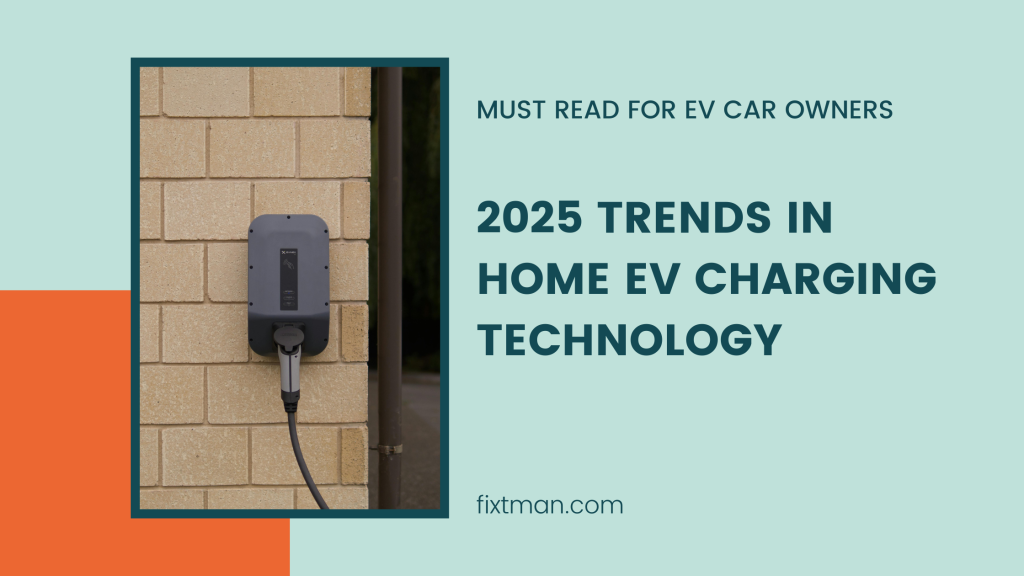The rapid adoption of electric vehicles (EVs) has transformed the way we think about home car charging stations. As we move into 2025, advancements in technology continue to shape the future of home EV charging. In this article, we’ll explore the emerging trends, innovations, and technologies that are making home EV charging more efficient, convenient, and eco-friendly than ever before.
Emerging Technologies in Home EV Chargers
From ultra-fast charging to wireless solutions, the latest EV charger innovations are enhancing the EV charging experience for homeowners. Let’s dive into the most exciting developments for 2025.
Ultra-Fast Home Chargers
One of the most anticipated advancements in home EV charging stations is the development of ultra-fast chargers. These chargers are designed to significantly reduce charging times, enabling an electric car to gain a substantial amount of range in just a short period—sometimes in as little as 30 minutes. While most best home electric vehicle chargers take several hours to fully charge a vehicle, ultra-fast chargers aim to bring this time down to an hour or less, allowing for more flexibility and convenience for EV owners.
Best Home EV Chargers will likely feature higher power outputs, allowing homeowners to enjoy the convenience of near-instantaneous charging, especially for those with multiple vehicles. As battery technology improves, we can expect these chargers to become a staple for home installations.
Wireless (Inductive) Charging
Wireless or inductive charging is another exciting trend in home car charging for electric cars. Instead of using a physical cable to connect the car to the charger, inductive chargers use electromagnetic fields to transfer energy to the vehicle. This eliminates the need for physical connectors and creates a more convenient, mess-free charging experience.
While still in the early stages, best home electric car chargers with wireless technology could be a game-changer. Imagine simply parking your car over a charging pad, and it starts charging automatically—no plugging in required. This innovative technology could soon be available for residential use in the coming years.
Bidirectional Charging (Vehicle-to-Home and Vehicle-to-Grid)
Bidirectional charging, also known as vehicle-to-home (V2H) or vehicle-to-grid (V2G) technology, is one of the most promising advancements in EV charging. With bidirectional charging, your electric car can not only draw power from the grid but also supply power back into the home or the grid itself.
For homeowners, this means that best dual EV chargers could serve as a backup power source during grid outages. With V2H, your EV can act as an emergency power supply, helping to power lights, appliances, and other essential devices. This capability will become more common as EVs become more integrated into the smart grid.
Smart Chargers with Enhanced AI Integration
Smart chargers with advanced AI are poised to revolutionize how we charge our EVs at home. These chargers can optimize charging schedules, monitor energy consumption, and even adjust charging times based on energy demand or grid status. AI can also help reduce energy costs by charging the vehicle during off-peak hours when electricity rates are lower.
As these chargers become more sophisticated, homeowners will benefit from energy-efficient charging that is automated and responsive. For example, your best EV chargers could learn your driving patterns and only charge your car when it’s necessary, ensuring you never overcharge or undercharge.
Solar-Powered EV Chargers
The demand for sustainable energy solutions is driving the growth of solar-powered EV chargers. By integrating solar panels with home charging stations, homeowners can charge their electric cars using renewable energy from the sun, reducing reliance on grid power and lowering their carbon footprint.
Installing a home car charging station with solar capabilities is a great way to make your home more eco-friendly and energy-efficient. These systems often come with battery storage options, allowing homeowners to store excess solar energy for use at night or during cloudy days, ensuring a consistent and sustainable power supply for their EVs.
Design Innovations for Modern Homes
In addition to technological advancements, the design of charging stations for home use is evolving to fit seamlessly into modern homes. Let’s take a look at some of the key design trends in 2025.
Compact and Aesthetic Designs
As more homeowners look to install outdoor electric car chargers, manufacturers are prioritizing compact and aesthetically pleasing designs. The best home electric vehicle chargers are no longer bulky, industrial-looking devices; instead, they are sleek, minimalistic, and often customizable to match the exterior of your home.
These chargers can blend in with the environment, offering functionality without detracting from the overall appearance of your home. Compact designs are especially important for homeowners with limited space or those who want to maintain a clean, organized look in their garage or driveway.
Modular Charging Stations
Modular charging stations are gaining popularity for their flexibility and scalability. These systems allow homeowners to start with a basic setup and easily add more charging ports as their needs grow. This is particularly useful for families with multiple EVs or for those who plan to upgrade their charging capabilities in the future.
With a best dual EV charger, homeowners can charge two vehicles simultaneously, optimizing space and energy efficiency without requiring a complete overhaul of their existing charging infrastructure.
Software and Connectivity Upgrades
As technology continues to evolve, software and connectivity are becoming more integral to home EV charger systems. Here are some of the most notable upgrades for 2025.
Advanced Mobile Apps
Mobile apps are becoming increasingly important for managing home EV chargers. The best EV chargers now come with mobile apps that allow users to monitor their vehicle’s charging status, schedule charging times, and even receive notifications when the car is fully charged.
These apps can also provide insights into energy usage, helping homeowners track their consumption and make adjustments to reduce costs. With more advanced app features, charging your EV will become a fully integrated part of your daily routine.
Enhanced Cybersecurity for Connected Chargers
As EV charging stations become more connected to the internet and other smart devices, ensuring robust cybersecurity is critical. Hackers could potentially target connected charging stations to disrupt home energy systems or gain unauthorized access to personal data.
In response, manufacturers are incorporating more advanced security features to protect against cyber threats. Expect to see best home electric car chargers with encryption, multi-factor authentication, and other cybersecurity measures to ensure safe, secure, and reliable charging.
Sustainability and Eco-Friendly Features
Sustainability is a driving force behind the development of new EV charging technologies. Here are some key trends in eco-friendly charging for 2025.
Recycled and Sustainable Materials
As the demand for EV chargers grows, manufacturers are focusing on using recycled and sustainable materials to construct chargers. This includes using recycled plastics, metals, and other eco-friendly materials that reduce the environmental impact of production.
By purchasing EV charging stations made from sustainable materials, homeowners can feel confident that their charging infrastructure is aligned with their values and commitment to sustainability.
Energy Efficiency Certifications
In 2025, more car chargers for electric cars will feature energy efficiency certifications to ensure that the systems are using power in the most sustainable way possible. These certifications help homeowners identify the most efficient and eco-friendly charging solutions, reducing both their carbon footprint and energy costs.
Cost Trends and Accessibility in 2025
With technology advancing and production costs decreasing, the price of installing home EV charging stations is expected to become more affordable in 2025. Let’s take a closer look at cost trends.
Declining Hardware Costs
As competition increases and manufacturing processes improve, the price of best home electric vehicle chargers is expected to decline. This will make home charging stations more accessible to a wider range of consumers, accelerating the adoption of EVs.
Increased Incentives for Home Charging
Many governments and utilities are offering incentives to encourage homeowners to install charging stations. These incentives may come in the form of rebates, tax credits, or reduced installation costs, making it more affordable for homeowners to transition to EVs.
Challenges and Considerations
While the future of home EV charging looks promising, there are still a few challenges to consider.
Integration with Older Homes
Older homes may require significant upgrades to support the installation of modern EV chargers. Electrical systems in older homes might not be able to handle the power requirements of newer charging stations, which can increase installation costs.
Adapting to Future EV Charging Standards
As EV technology continues to evolve, charging standards may change as well. Homeowners will need to stay informed about future standards to ensure that their charging station remains compatible with new EV models and charging protocols.
In conclusion, the future of home EV charger technology is full of exciting innovations and trends. From ultra-fast charging solutions to wireless and solar-powered options, these advancements are making EV ownership more convenient and sustainable than ever before. Whether you’re considering installing a best home electric vehicle charger or upgrading your current system, the trends of 2025 will provide plenty of options to suit your needs.



